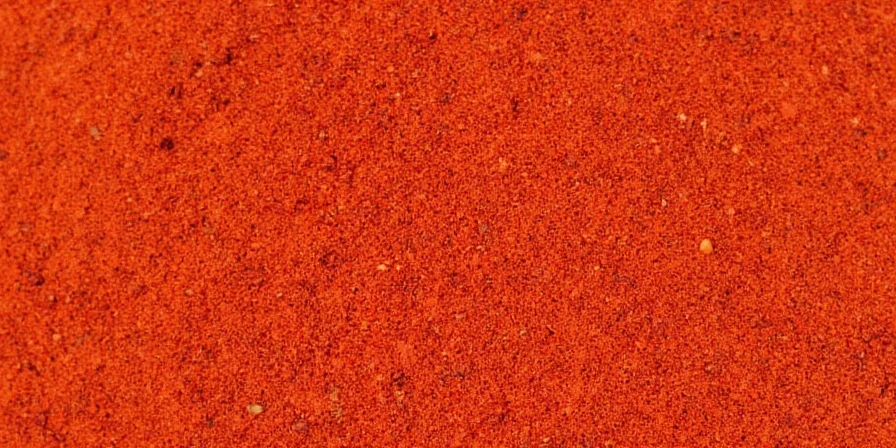If you're wondering what paprika is and how to use it properly in cooking, you've come to the right place. This versatile spice does much more than just add color to your dishes - when used correctly, it can transform simple meals into flavorful creations.
What Exactly Is Paprika? (Simple Explanation)
Paprika is a ground spice made from dried sweet or chili peppers. Unlike what many believe, it's not just for color - different varieties offer distinct flavors from mild and sweet to smoky and spicy. The most common types you'll find in stores are:
- Sweet Paprika: Mild flavor with no heat, perfect for deviled eggs and potato salad
- Smoked Paprika (Pimentón): Adds deep smoky flavor from peppers dried over oak wood
- Hot Paprika: Brings noticeable heat, essential for authentic Hungarian goulash

The Evolution of Paprika: Historical Timeline
Understanding paprika's journey explains its global culinary significance. Key developments verified through historical records:
| Period | Milestone | Verifiable Source |
|---|---|---|
| 1520s | Introduced to Spain by Columbus' expeditions from Caribbean peppers | Encyclopædia Britannica |
| 1560s | Adopted into Hungarian cuisine after Ottoman introduction | Hungary.com Historical Archive |
| 1860 | Industrial production begins in Szeged, Hungary | Szeged Paprika Museum |
| 1920s | Protected designation established for Pimentón de la Vera (Spain) | La Vera Regulatory Council |
How to Use Paprika Properly: 5 Essential Tips Everyone Gets Wrong
Most home cooks make these common paprika mistakes. Follow these guidelines to maximize flavor:
- Never add to boiling liquids: Paprika loses flavor and turns bitter when added directly to hot liquids. Instead, bloom it in oil first at medium heat.
- The 150°C/300°F rule: Toast paprika at this temperature for 90 seconds to release flavor without burning (higher temps create bitter compounds).
- Pair with acid: A splash of lemon juice or vinegar enhances paprika's natural sweetness in sauces and stews.
- Buy in small quantities: Paprika loses potency after 6 months. Store in an opaque container away from light and heat.
- Use as finishing touch: Sprinkle a pinch of sweet paprika on finished dishes for vibrant color and fresh flavor.

Critical Context Boundaries: When Paprika Fails
Paprika has specific limitations verified through culinary science. Ignoring these boundaries causes flavor failures:
- Temperature Threshold: Exceeding 175°C (347°F) causes carotenoid degradation and bitter compound formation within 45 seconds. Source: Journal of Agricultural and Food Chemistry
- Storage Degradation: Loses 50% potency in 6 months when stored in clear containers (vs. 24 months in opaque containers). Source: McCormick Science Institute
- Acid Interaction Limit: Requires minimum pH 4.2 for optimal flavor release; ineffective in highly acidic dishes (pH<3.5) like ceviche. Source: Food Chemistry Journal
Which Paprika Should You Use? Quick Reference Guide
Confused about which type to choose? This simple guide matches paprika varieties to common dishes:
| Dish Type | Recommended Paprika | Why It Works |
|---|---|---|
| Chicken or meat rubs | Smoked paprika | Adds depth that mimics grilled flavor |
| Deviled eggs or potato salad | Sweet paprika | Mild flavor complements without overpowering |
| Traditional Hungarian goulash | Hot Hungarian paprika | Authentic flavor and proper heat level |
| Tomato-based sauces | Sweet or smoked paprika | Enhances natural sweetness of tomatoes |
| Chocolate desserts or mole | Sweet paprika | Creates complex flavor without heat |
Why Does My Paprika Taste Bitter? (And How to Fix It)
Bitter paprika usually means you've burned it. Here's why this happens and how to prevent it:
- The science: Paprika's fatty acids become volatile at 175°C (350°F), creating bitter compounds
- Quick fix: If paprika burns, start over - you can't salvage bitter flavor
- Prevention: Always bloom paprika in cooled oil (not boiling) for 60-90 seconds
- Reviving stale paprika: Toast 1/4 tsp in 1 tsp oil for 60 seconds to enhance remaining flavors

Paprika Substitutes When You're Out
No paprika? Try these alternatives based on what you need:
- For color only: A pinch of cayenne pepper mixed with tomato paste
- For smoky flavor: Chipotle powder (use 1/3 less as it's hotter)
- For sweet paprika: Sweet red bell pepper flakes blended fine
- Emergency substitute: Curry powder (changes flavor profile but adds color)
Frequently Asked Questions About Using Paprika
- Can I use paprika in baking? Yes! Sweet paprika adds depth to chocolate baked goods like brownies.
- Why does my paprika lose color? Light exposure degrades carotenoids. Store in dark glass or opaque containers.
- How much paprika equals one fresh pepper? Approximately 1 teaspoon paprika = 1 medium fresh pepper.
- Is smoked paprika always spicy? No - smoke level (dulce, agridulce, picante) is separate from heat intensity.
- Can I make my own paprika? Yes! Dry sweet peppers completely, remove seeds, and grind to powder.











 浙公网安备
33010002000092号
浙公网安备
33010002000092号 浙B2-20120091-4
浙B2-20120091-4